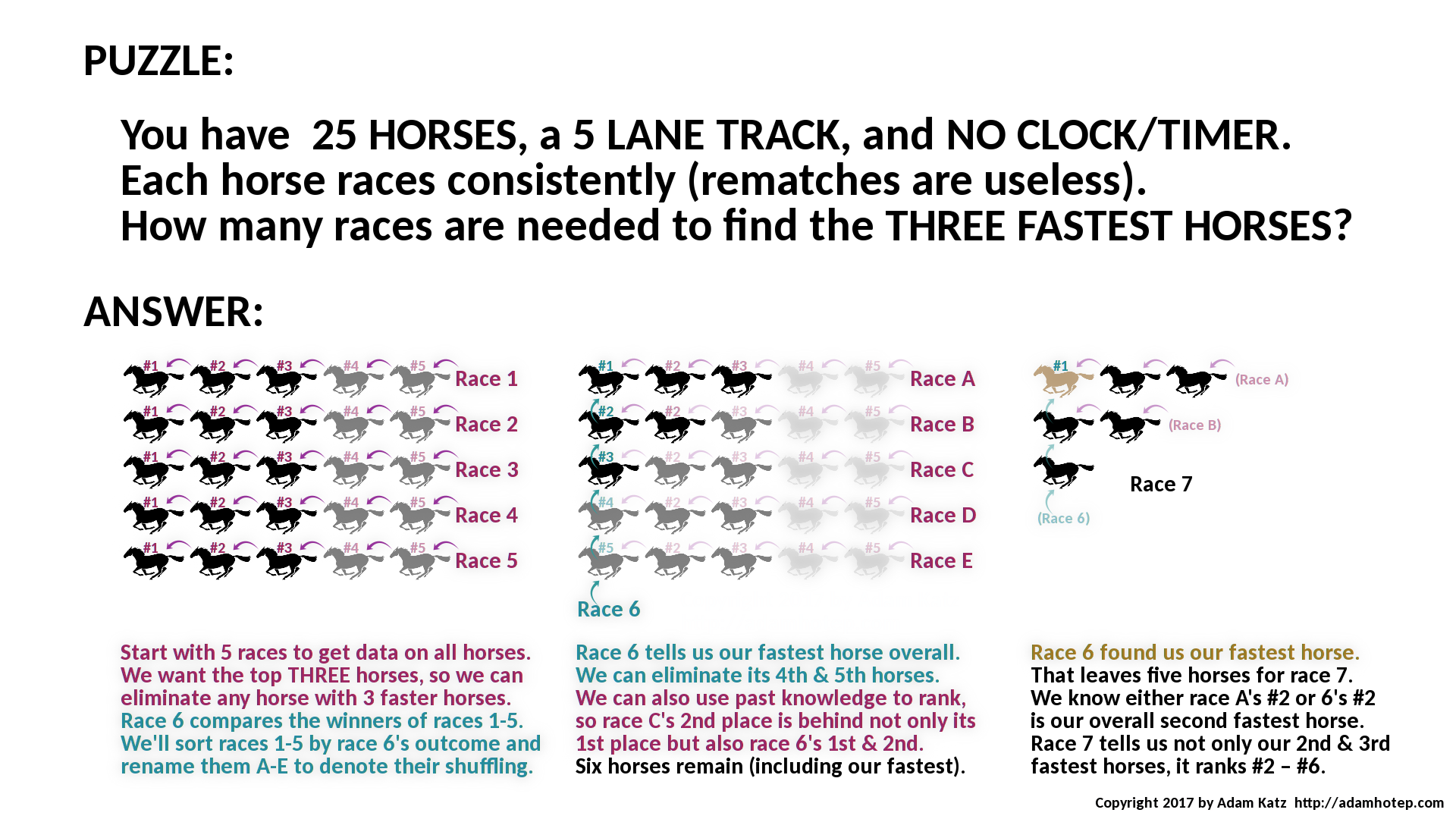I had so much fun with this puzzle that I made graphics to ask and then explain it.
First, let me start you with three clues:
- I found it easier to think about this puzzle visually using a 5 × 5 grid
- Your first race might contain the top three horses, so be careful
- Since we want the top three horses, we can rule out any horse with three faster horses. The 4th and 5th finishers in a five-horse heat can't possibly be among the three we're looking for.
Each column of the above graphical answer is a "round" of races. There are five races (“heats”) in the first round 1 and one race each in the subsequent two rounds.
First round: Qualifying heats
Start with 5 races to get data on all horses.
We want the top three horses, so we can eliminate any horse with 3 faster horses.
Race 6 compares the winners of races 1–5. We sort races 1–5 by race 6’s outcome and rename them as A–E to denote their shuffling.
Second round: The fastest horse
Race 6 tells us our fastest horse overall. We can also eliminate its 4th and 5th fastest horses.
We can also use past knowledge to rank relative to the sixth race, so race C’s 2nd place is behind not only its 1st place but it is also behind race 6’s 1st and 2nd place horses. The arrows in each round’s mock-up demonstrate what we know so far. Round one eliminated 10 horses. Round two eliminates another nine.
Six horses remain (including our fastest).
Third round: The runners-up
As we already established, race 6 found us our fastest horse, so it doesn’t need to be raced again.
hat leaves five horses for race 7. We know either race A’s 2nd or 6’s 2nd is our overall second-fastest horse since they're adjacent to our overall winner. Race 7 tells us not only our 2nd & 3rd fastest horses, it ranks 2nd–6th overall as well.

